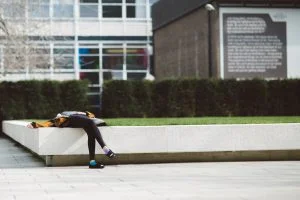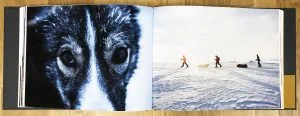Ask An Agent / How to edit your printed portfolio
Ask an Agent is a regular monthly feature answering your questions about the business of photography – the photography industry’s first Agony Aunt!
If you have any questions you’d like to ask a photographers agent please send them to hello@lisapritchard.com. Questions can be on anything to do with the photography business, such as photoshoots, marketing, professional practice, pricing, contracts, legal stuff – anything.
Following on from last month’s Ask an Agent which was all about printed portfolios, Lisa brings you some tips on editing your images.
I’ve had quite a few emails to Ask an Agent on the subject of editing your work for a printed portfolio, so thought it best I tackle this one next. This is based mostly on advice to advertising and commercial photographers getting a printed portfolio together from scratch, but I think photographers from all niches might find it useful.
Many photographers profess to being useless at editing their own work. I wouldn’t entirely disagree, although there are some exceptions to the rule. I think the problem is that a photographer’s perspective of their own work is different to others, it’s too close up, so they find it difficult to see the bigger picture. Aside from it being hard to separate any particularly negative, or indeed positive experiences from the shoot day which might cloud one’s judgement of the image, sometimes photographers have just stared at their images too much.
I have prepared a few pointers, which will hopefully help.
- The first thing to do is to establish what lasting impression you want to give. How do you want to be remembered, how do you want people to define you? ‘I just saw this great portfolio, she’s a ‘…’ photographer, and shoots themes and things like ‘…’, in a ‘…’ style. Fill in the blanks as a starting point.
Each image in the folio should give the same message, so it could be ‘ I’m a social documentary photographer, with an interest in U.K everyday life, my work has a gentle and sometimes humorous edge’, or it could be ‘I’m a lifestyle photographer with warm and engaging imagery’ or ‘I’m a still life and people photographer with a leaning towards luxury brands and sophisticated craftsmanship’
It could be anything, but the point is this thread needs to be evident throughout and it needs to be crystal clear.
- Basing it on say an edit of 30-50 images, plan a definitive beginning, middle and end.
Hit home hard with the images at the start and finish. They should give an immediate and long-lasting impression of what you are all about. Buyers (or potential agents!) can switch off and write you off straightaway if the beginning of your folio is weak, confusing or ill-conceived. Get them at ‘hello’!
- Think of your images in sets of 2, 3, 4 or sometimes 6. Groups of images together from the same shoot or with a similar feel or tone will bring the whole book together more effectively than random, disjointed images.
- I think images printed on both sides work better and you can show more work. The juxtaposition of images when the folio is printed this way can really being things alive. Also an image that works as a double page spread can really have an impact.
- OK now down to the nitty gritty of choosing the images.
Be ruthless. Only show your best work and work that fits the criteria in my point number one. Just one or two ‘turkeys’, will leave a negative impression. I’ll be frank, some images I’ve seen in people and lifestyle portfolios for example, can be really cheesy. The reason for this is not usually because the photographer isn’t any good, it’s usually due to some other reason like the models or location were pretty duff on the day, or sometimes that it was a commission and the art direction was out of the control of the photographer. The photographer has usually decided to keep images like this in the edit because it’s a commission, or because they felt they needed a shot of girls having a latte in a coffee bar in their book! If in doubt ‘leave it out’! (I could almost do a top 10 list of images/themes/poses/styling not to include, but maybe I’ll leave that to another day when I’m feeling braver!)
If you find yourself being really indecisive over any particular image, ask yourself –if you could only choose one image for a mailshot, would this be good enough or representational enough? If the answer is no, don’t include it.
There are other more obvious rules like, don’t get repetitive. There are only so many surfers on the beach you need to see to get the point across, or overhead plates of food on a wooden table top with a linen napkin, or pretty pink cup cakes - given, both can make for very nice images, but show a range of themes and subjects - and stick to the criteria in number one!
Think of it from the ‘customer’s’ point of view, give them a good experience. Get to the point, make it easy and enjoyable. If you were the commissioner, flicking through a portfolio of 40 ish pages and want a complete, concise and relevant overview, what would you want to see?
- Get some feedback, but remember you are never going to please all of the people all of the time!
We do sometimes get conflicting opinions when we take the books out. For example, some clients want to see lots of commissioned work, usually the ones at the coal face, communicating with the client who holds the purse strings. Some actually like to see copy and text on images from the final art work, others would rather not to have this distraction. Some would prefer to see mostly personal work, and some might assume this means the photographer hasn’t had any commissions. A mixture of both is the best solution, and I reckon it’s actually a mark of a successful photographer when you can’t tell which is which.
In terms of the actual work the art directors, designers and art buyers like, a lot of the time this may be based on personal preferences and very subjective. Just look at the work that wins awards then the actual judges. This isn’t necessarily a bad thing, creatives are often inspired by what they see in folios and base their concepts and sell in ideas around this. These people mostly know what they are talking about and have finely tuned perceptions that don’t need justifying.
I’ve had plenty of no holds barred comments from art buyers over the years. I’d rather this than vague or little feedback to be honest. Occasionally though, you might get some confusing feedback. The top ten advertising agencies for example are happier to see less images and a more strict and specific signature style. I take this on board, however this approach might negate a lot of other commissions. More mainstream agencies (and let’s face it, there’s more work and less competition from these) want to see a bigger selection of work - as long as it is still consistent and strong. I hate to say it but when I’ve gone by the rules of less images, more ‘award winning’ type work it hasn’t paid off. I think whatever the type of work you need to be realistic about what is being commissioned, and not so concerned with what is winning awards - although you’ve hit the jackpot if you can fuse the two.
Garner opinion from all areas and don’t feel you need to change your whole book due to one negative meeting (I’ve had one commissioner absolutely slate on of my photographers portfolios, funny that he earnt (earns!) four times her salary and is one of our busiest photographers on our books - obviously I didn’t deliver quite like this at the time!
- Update the folio when you get new work, this doesn’t have to be all the time but it's a good excuse to get out and see potential clients again. People love seeing a new refreshed folio, and it’s a great sign that a photographer is busy, successful and proactive!
Your portfolio is one of your main shop windows, so think it through from all angles!
Whether you’re a creative director or a student, a photographer or a designer, an art buyer or an assistant, if you have any questions you’d like to ask a photographers agent please send them to hello@lisapritchard.com and we’ll answer as many as we can!
Please Note:
We reserve the right not to enter into ongoing correspondence.
We reserve the right not to answer all questions sent to Ask an Agent.
Please state whether you would like to remain anonymous.
This advice should be taken as a guide only.
Lisa Pritchard, LPA and guest bloggers take no responsibility for any omissions or errors.
The images used in this article are for illustrative purposes only and do not necessarily correlate with specific facts or examples cited in the text.
Please seek professional legal advice should you require it.











